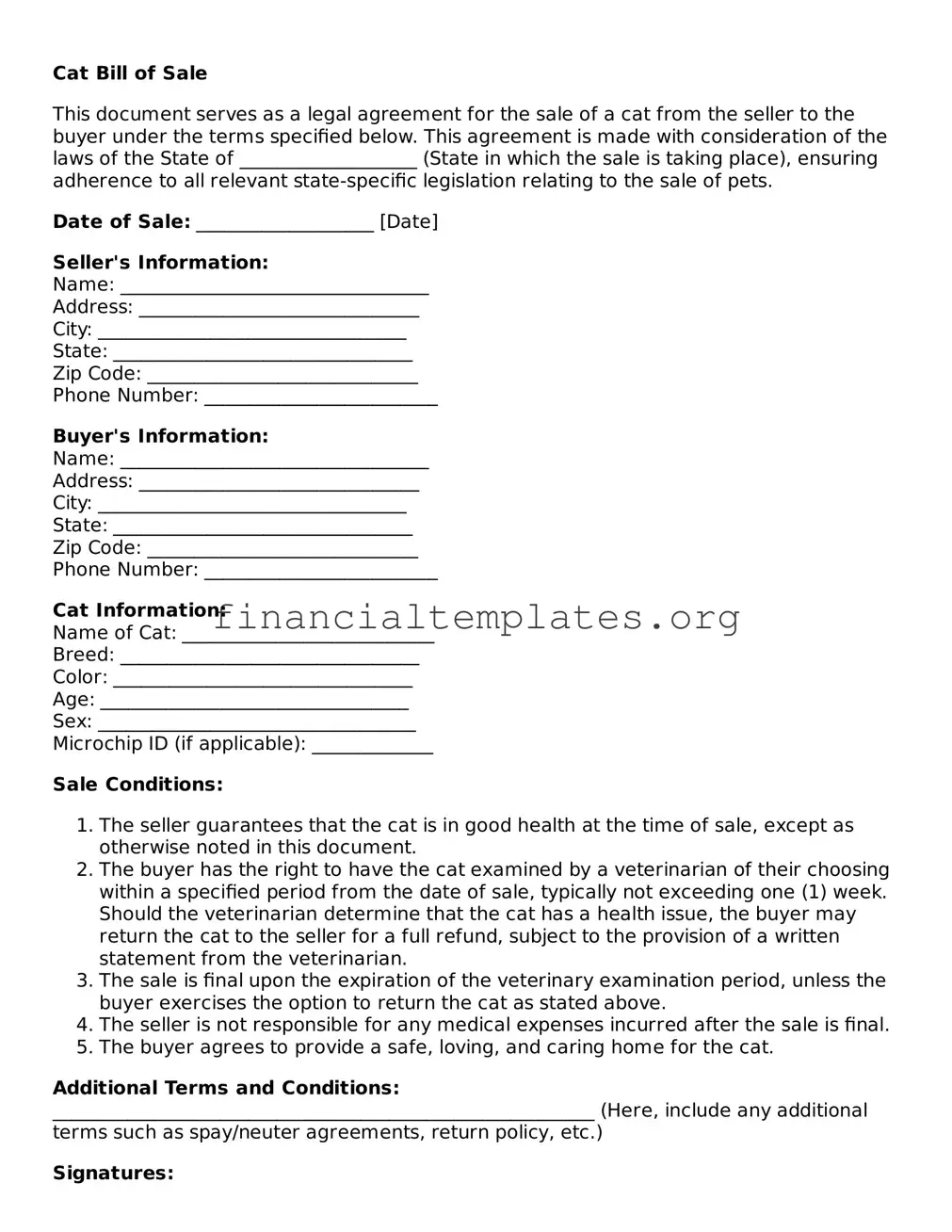A Dog Bill of Sale is conceptually identical to a Cat Bill of Sale. It acts as a formal transaction document that records the sale and transfer of a dog from the seller to the buyer. Similar to its feline counterpart, it typically includes identifying details about the dog, the sale price, and the signatures of both parties. This document ensures the buyer has proof of ownership, while the seller has evidence of the transfer of responsibility.
An Automobile Bill of Sale follows a parallel structure, serving as a legal document that records the sale and transfer of a vehicle from one party to another. Although this document pertains to vehicles rather than pets, it shares the same core components: details about the item being sold (in this case, the vehicle), the agreed-upon sale price, and the signatures of both the buyer and seller. This form also often includes the vehicle's VIN, make, model, and year, mirroring the breed, age, and identification details in a Cat Bill of Sale.
A Boat Bill of Sale is quite similar, documenting the transaction of a boat from seller to buyer. Though focusing on a different type of property, it shares the fundamental purpose of recording the specifics of the transaction, including a detailed description of the boat, the sale price, and both parties' signatures. Additional details might include the boat's make, model, year, and hull identification number, analogous to the pet identification details in a Cat Bill of Sale.
Firearm Bill of Sale forms also share similarities, as they are essential for recording the sale and transfer of a firearm from one individual to another. This document typically includes specific information about the firearm, the names and addresses of both the buyer and seller, the sale price, and signatures. It ensures legal ownership transfer, similar to how a Cat Bill of Sale proves pet ownership.
A General Bill of Sale is a more broad document used for the sale of personal property items, from furniture to electronics. While it is not specialized for animals, vehicles, or firearms, it shares the core purpose of documenting a transaction. This includes a description of the item sold, price, and parties' signatures, offering legal proof of the transfer of ownership, akin to the more specific Cat Bill of Sale.
An Equipment Bill of Sale is specifically designed for the sale of machinery and equipment. Similar to animal or vehicle sale documents, it includes a detailed description of the equipment, sale price, and the signatures of both parties involved in the transaction. This document ensures that the buyer legally acquires the equipment, similar to how a Cat Bill of Sale secures the buyer's ownership of a pet.
A Livestock Bill of Sale is closely related, focusing on the sale and purchase of animals like cattle, pigs, sheep, and horses for agricultural purposes. It shares the central aspects of a Cat Bill of Sale, including identifying details of the livestock sold, the transaction's amount, and the signatures of the buyer and seller, ensuring a lawful change of ownership.
A Furniture Bill of Sale documents the sale of furniture from one party to another. Though the item in question differs, the form functions similarly to a Cat Bill of Sale by detailing the furniture's description, the sale's price, and obtaining both parties' signatures for proof of the transfer of ownership. This form is used to ensure both buyer and seller have a record of the sale, highlighting the exchange's legitimacy.
Lastly, an Artwork Bill of Sale documents the sale of a piece of art, from paintings to sculptures. It requires detailed descriptions of the artwork, information about the seller and buyer, the sale price, and signatures. Similar to a Cat Bill of Sale, it provides a legal record that proves the transfer of ownership, ensuring the buyer's rights to the artwork and the seller's acknowledgment of that transfer.
